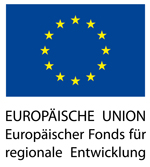ASTM F2624 Extra-discal spinal constructs
We offer you a test method for the mechanical characterization and determination of the wear characteristics of semi-rigid spinal implants according to ASTM F2624. These implants are designed to increase the stability of the spine, while maintaining the mobility. In all test methods, the implants are firmly connected to test-blocks made of polyacetol and clamped in specially designed test devices. The test devices are designed to apply rotations, shear loads or compression loads. From the following range, we will select the appropriate test procedures for your individual spinal implants:
- Static test methods
1. Mechanical properties under flexion, extension, axial torsion and lateral bending:
A torque of max. 60 °/min around the transverse axis (positive direction = flexion, extension), around the sagittal axis (axial torsion) or longitudinal axis (lateral bending), and the respective torque- angle curve is recorded. These are then evaluated with regard to the mechanical properties (including stiffness and strength).
2. Bending test under compression:
A constant displacement with max. 25 mm/min is applied to the upper test-block which is parallel to the sagittal axis. The force-displacement curve is recorded and evaluated with regard to the mechanical properties (including stiffness and strength) under pressure.
3. Anterior-posterior shear strain:
A constant displacement with max. 25 mm/min to the upper test-block which is parallel to the longitudinal axis. The force-travel curve is recorded and evaluated for mechanical properties (including stiffness and strength) under shear. - Dynamic test method
Following the static tests, the tests are performed dynamically with new test specimens over 5 million cycles. In this case, a constant ratio of the maximum to the minimum load, which depend on the respective test setup, is to be ensured. The maximum load should be 25, 50 or 75% of the respective maximum load. The test is completed when the 5 million load cycles are reached or a mechanical failure of the implants occurs. The tests can be carried out under laboratory conditions (air and room temperature), in Ringer solution or calf serum at 37 °C, if corrosive effects are relevant. - Wear tests
For the wear tests, the test specimens are clamped in a test chamber filled with Ringer solution or calf serum at 37 °C. Over a period of 10 million cycles, different motions of the implants are performed: ± 7.5° flexion-extension, ± 6° lateral flexion to the left and right, and ± 3° axial rotation to the left and right. The dynamic tests can be used to determine the wear caused by compression and shearing. All test specimens are weighed and measured before and after the dynamic load in the clean and dry state in order to determine the abrasion. In addition, the surfaces are evaluated with optical measuring methods. In addition, after 1 million cycles, the medium is exchanged and the abrasion particles are filtered out and analyzed.
During the tests, two control components must be stored in a chamber with the same test medium. In this way, the weight increase of the test bodies by the absorption of the test medium can be compensated, which would otherwise falsify the results.





